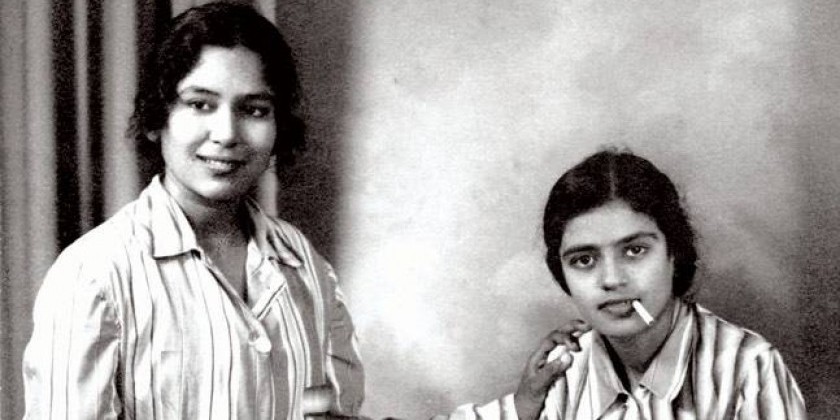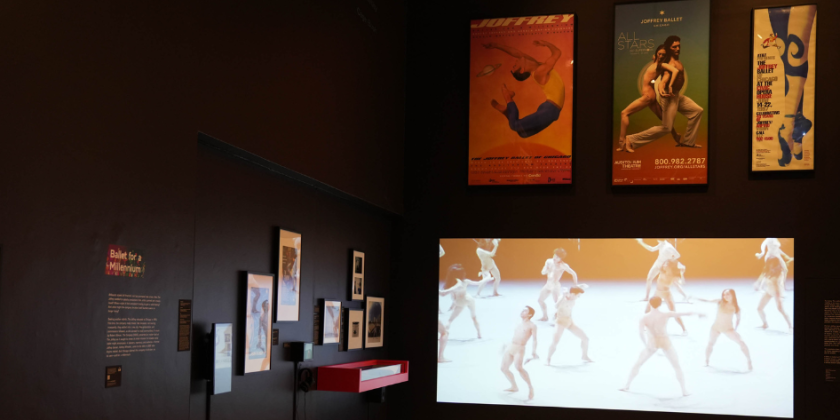IMPRESSIONS: "Dancing The Gods" with Sreelakshmy Govardhanan and Praveen Kumar

Presented by the World Music Institute at Ailey Citigroup Theater, April 14-15, 2023
Curated and produced by Rajika Puri
Program One: Kuchipudi
Dance and choreography by Sreelakshmy Govardhanan
Music by Saint Siddhedra Yogi and Sri Ajith Edappilly
Text by Sri Vasudevan Namboothiri
Musicians: Ramya Kapadia (vocals), Kasi Aysola (Nattuvangam), Bala Skandan (Mridangam), and Parthiv Mohan (violin)
Program Two: Bharatanatyam
Dance and choreography by Praveen Kumar
Music and lyrics by Papanasam Sivan, Tiruyur Rajagopala Sharma, Kshetrayya, and Mysore Vasudevachar
Musicians: Dr. Umesh Venkatesan (Nattuvangam), Vignesh Ravichandran (vocals), Bala Skandan (Mridangam), and Shwetha Narasimhan (violin)
Dance is a sacred art in India, not merely a showcase for physical training or skill in story-telling but an expression of devotion (“bhakti”). So, while Sreelakshmy Govardhanan is a virtuoso of the Kuchipudi school, her performance at the Ailey Citigroup Theater, on April 14, owed its phenomenal impact not merely to her grace, liveliness, and precision but to her ability to make us feel a “oneness” with the divine.
The same is true of Praveen Kumar, a Bharatanatyam dancer who was the hero of the following night’s program. Both these artists were featured as part of the annual Dancing the Gods festival, and both achieved a rare, and wonderful elevation of the spirit, assisted by live musical ensembles whose yearning Carnatic melodies tugged at our hearts. Such outstanding performances, expertly curated and introduced by Rajika Puri under the aegis of the World Music Institute, mark red-letter days on the year’s dance calendar.

The Kuchipudi soloist has a rich literature of epics and dramatic tales to draw upon; yet she bears a greater responsibility than the heroine of a ballet like Swan Lake, for instance, because the Indian dancer must play all the characters herself and supply her own scenery. Not far into Govardhanan’s opening number, Mandodari Shabdam, however, we find ourselves in a parkland teeming with wildlife. Deer go bounding, fish dart and plunge, and birds flitter; and the dancer pauses to look around in wonder at the natural paradise she has just created with deft and intricate hand-symbols. Mandodari, the title character, also lives here. She is a frog (here Govadhanan squats down, palms flat on the floor, her outline lumpy and amphibious). But not for long!
For reasons too complicated to explain, Mandodari is transformed into a beautiful princess, much to her own surprise. No sooner has she recovered, bathing and adorning her newly svelte figure, than she attracts the attentions of a suitor — the multi-headed king Ravana of Lanka. Govardhanan shows us Ravana’s masculine weight and swagger. Yet this lusty ruler is smitten, and he quails like the callowest of lovers when Mandodari spurns his advances. Finally, he overcomes her reservations, and then, as Ravana is flying his new bride home, Govardhanan becomes three characters at once: the king, a giant bird, and Mandodari peeking over the wings in terror as she spies the earth far below.

Govardhanan passes from one tour de force to another, her movement wonderfully elastic, her whole figure radiant, her hands and feet like well sharpened tools. In Bhama Kalapam, the glittering heroine is reduced to tears and melancholy self-absorption. Her vanity has led her husband, Krishna, to abandon her temporarily; and her friend, who offers to search for him, is pretending to be thick-witted.
In Krishna Stuthi, another extraordinary transformation takes place before our eyes. Here the demoness Poothana must disguise herself as a beautiful woman, and as Govardhanan whirls around a wave of energy passes up her body in a column, cloaking her. No movie has special effects this good. Afterward, Poothana seems pleased with her new look. With a self-satisfied wag of her shoulders, she sashays off to Vrindavan on a dastardly mission to murder the infant Krishna. Poothana needs to be careful, though. Seduced by the charms of Vrindavan, she is caught up in the dance of the Gopis, a centrifugal affair that makes her dizzy, and nearly causes her to drop her disguise. Govardhanan phases in and out of character, revealing a glimpse of the snarling, sharp-clawed demoness, before Poothana recovers her composure.

Poothana’s extraordinary death agony still awaits us, along with a cheerful divertissement in which Govardhanan keeps pace with the musical ensemble while dancing on a brass plate. Yet all this mimicry and rhythmic virtuosity serve only to soften us, and prepare us for the supreme moment when Govardhanan communicates the presence of Krishna in all things, and the joy of liberation from the material world. This is where she was taking us all along.
Kumar is also a story-teller, though his tales are less fantastic. In Bala Sakha, he dwells sentimentally on the childhood of Krishna — the young god’s impish pranks, and the loving indulgence of an adult companion. Viraha Sakha, in contrast, is a study of cynicism and bitterness. Here Kumar portrays a vain Lothario who abandons his family to pursue a love affair, only to be cast aside in turn. While mortals are prone to such life-destroying disappointments, Lord Krishna has enough love for everyone. In Pranaya Sakha, Krishna encounters unexpected resistance from a lady whom he has annoyed, but it is only a question of time before his charm overcomes her pique. When he finally puts his arm around her, Kumar turns to give us a smug, backward glance, as if to say, “I told you so.”

Bharatanatyam is a dance style of severe lines and staccato footwork alternating with nimble leaps. With fingers pinched or splayed and gestures darting to every corner, Kumar takes possession of the space by dissecting it with straight lines, asserting his bodily geometry. Here, too, however, the dancer’s goal is cosmic. At the end of Bala Sakha, he picks up Krishna’s flute and his body sways to the divine melody, hard angles melting away. This melody enchants a Gopi as she passes with a pitcher on her head. It seduces the animals and birds of the forest, drawing all of nature together. Finally, after an interval of proliferating rhythms and building excitement, the melody returns to Kumar himself, who becomes a humble devotee clutching Krishna’s precious gift to his heart.













